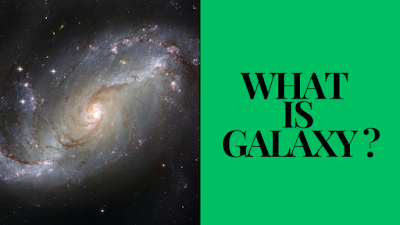What is Galaxy ?
## What is a Galaxy?
A galaxy is one of the universe's most fascinating and grand structures, captivating astronomers and stargazers alike. But what exactly is a galaxy? Let's delve into this cosmic wonder.
### Defining a Galaxy
At its core, a galaxy is a massive system that includes a variety of celestial objects:
1. **Stars**: The primary components of a galaxy, stars are immense spheres of burning gas, mostly hydrogen and helium, producing light and heat.
2. **Stellar Remnants**: These are the remnants of stars that have ended their life cycles. They can be white dwarfs, neutron stars, or black holes.
3. **Interstellar Gas**: A mixture of gases, primarily hydrogen, found between the stars. This gas can give birth to new stars through gravitational collapse.
4. **Dust**: Tiny particles of matter that, along with interstellar gas, contribute to the formation of new stars.
5. **Dark Matter**: A mysterious and invisible form of matter that does not emit light or energy, yet exerts gravitational force, influencing the structure and behavior of galaxies.
### The Role of Gravity
Gravity is the glue that holds a galaxy together. It binds stars, gas, dust, and dark matter, forming a cohesive system. Without gravity, galaxies would not exist in their structured forms, and the universe would be a vastly different place.
### Types of Galaxies
Galaxies come in various shapes and sizes. The most common types include:
1. **Spiral Galaxies**: Like our own Milky Way, these have a flat, rotating disk with spiral arms winding outward from the center. They are rich in gas and dust, making them prolific star-forming regions.
2. **Elliptical Galaxies**: These range from nearly spherical to elongated shapes. They contain older, redder stars and less interstellar gas and dust, indicating a lower rate of new star formation.
3. **Irregular Galaxies**: As the name suggests, these lack a distinct shape. They are often chaotic in appearance, usually rich in gas and dust, and can result from galactic collisions or interactions.
### The Milky Way: Our Galactic Home
The Milky Way is the galaxy that contains our solar system. It's a barred spiral galaxy, estimated to contain 100-400 billion stars and at least that many planets. Our solar system resides in one of its spiral arms, the Orion Arm, about 27,000 light-years from the galactic center.
### The Scale of Galaxies
Galaxies are colossal. They can span anywhere from a few thousand to hundreds of thousands of light-years across. The largest galaxies contain trillions of stars, while the smallest, known as dwarf galaxies, may have only a few billion stars.
### Galactic Interactions
Galaxies are not isolated entities; they interact with each other through gravity. These interactions can lead to collisions and mergers, forming new galaxies over millions or billions of years. Such events can trigger intense star formation, reshape galactic structures, and influence the evolution of galaxies.
### Conclusion
Galaxies are vast and complex systems that play a crucial role in the structure and evolution of the universe. From the swirling spiral arms of the Milky Way to the elliptical giants and irregular formations, each galaxy is a testament to the dynamic and ever-changing cosmos. Through studying galaxies, we gain insights into the origins and future of our universe, and our place within this immense cosmic web.







No comments